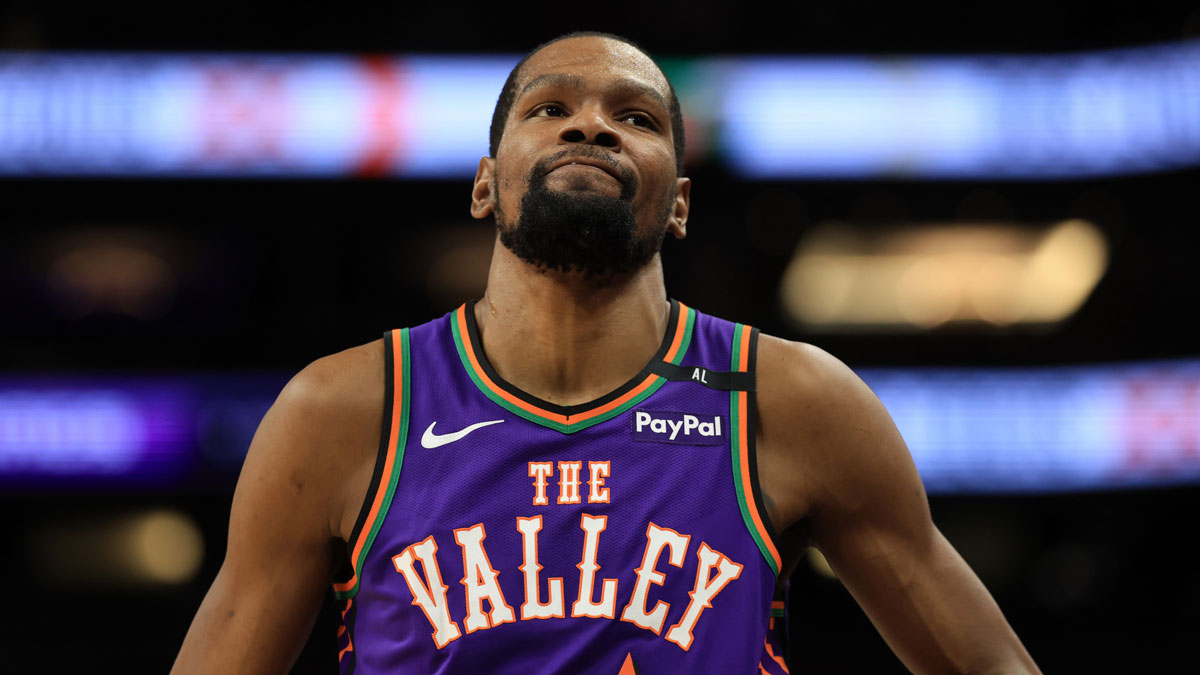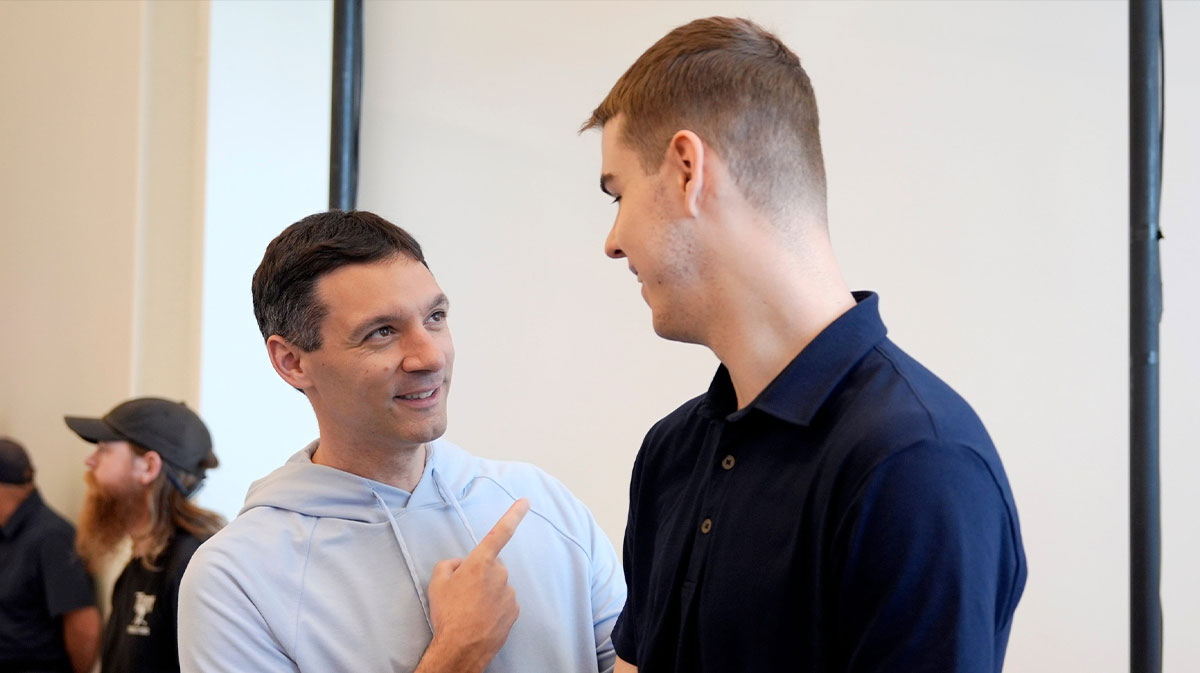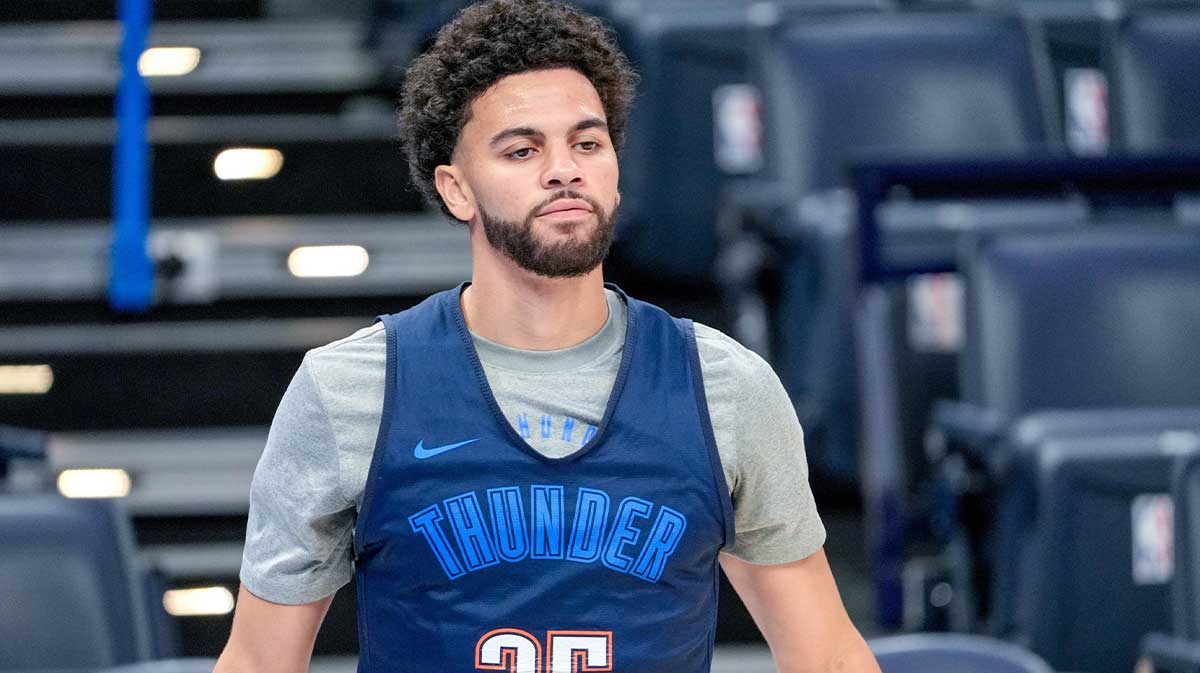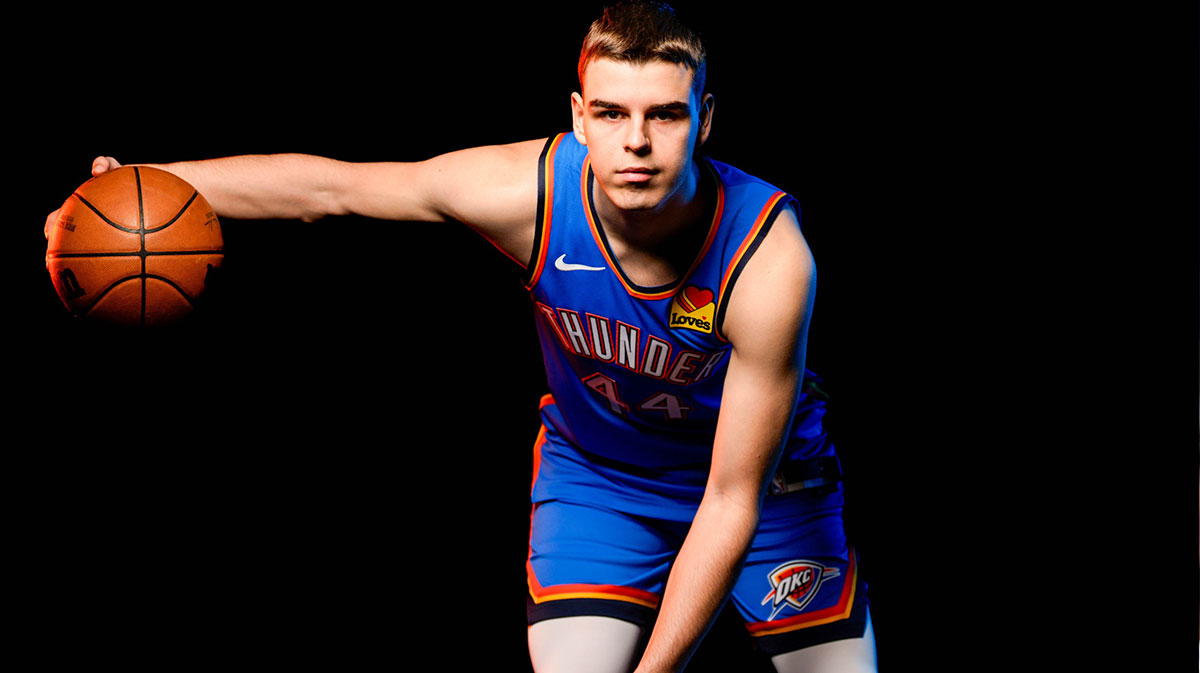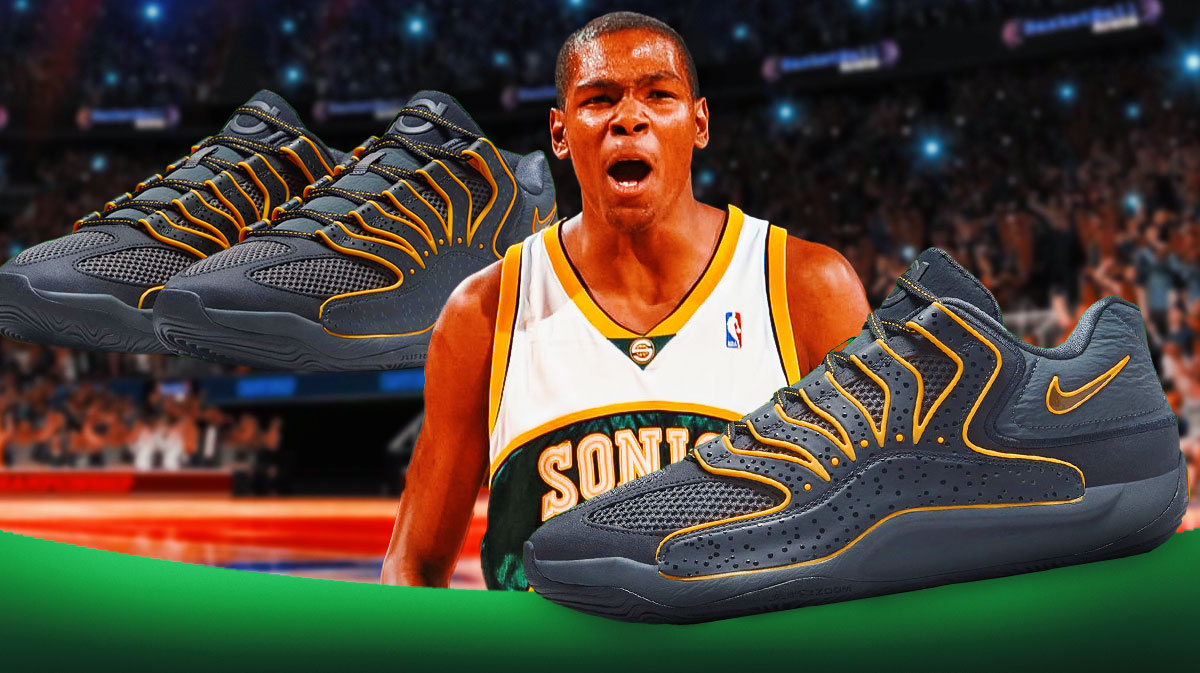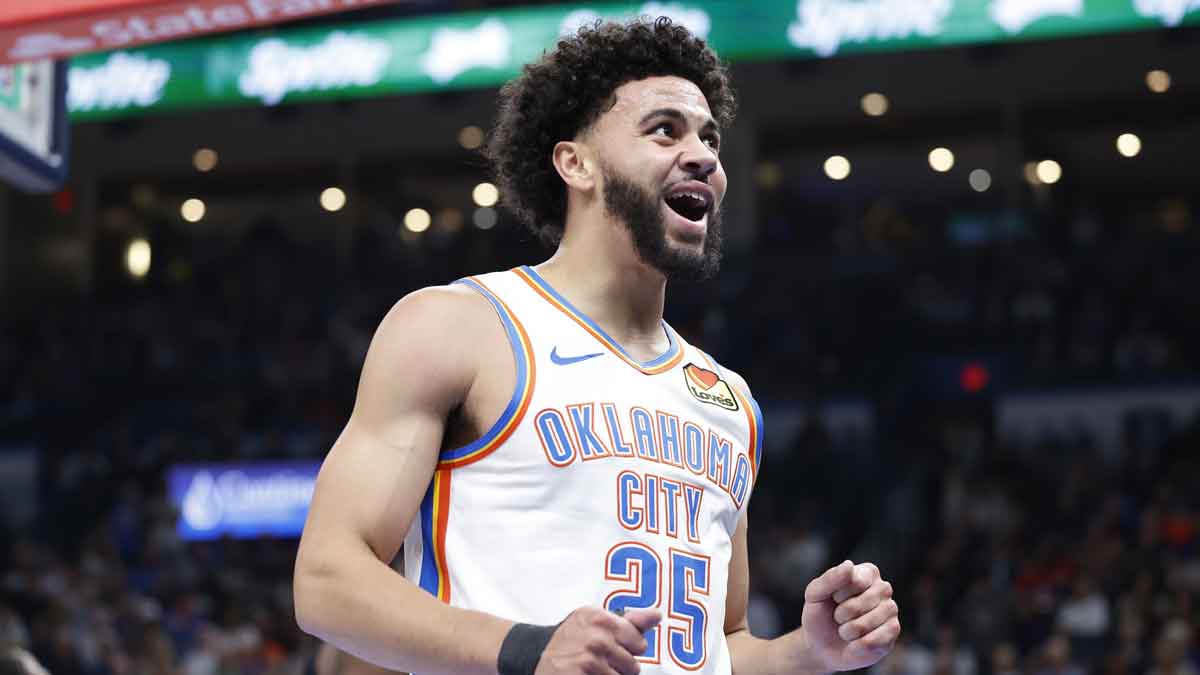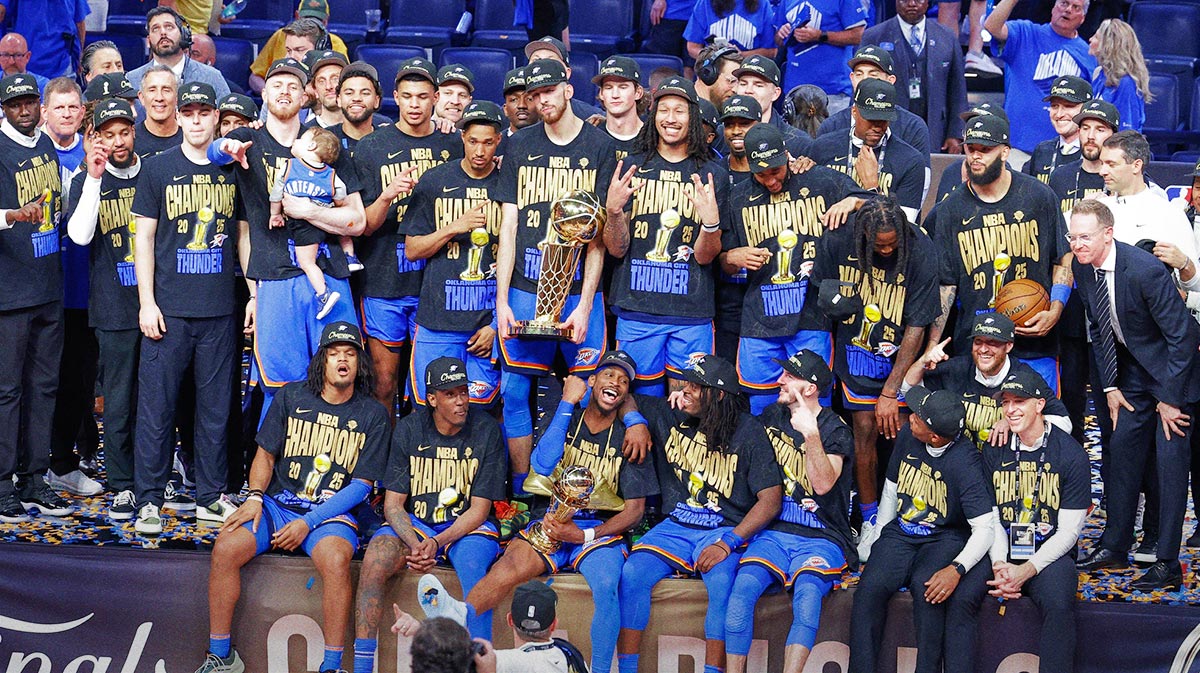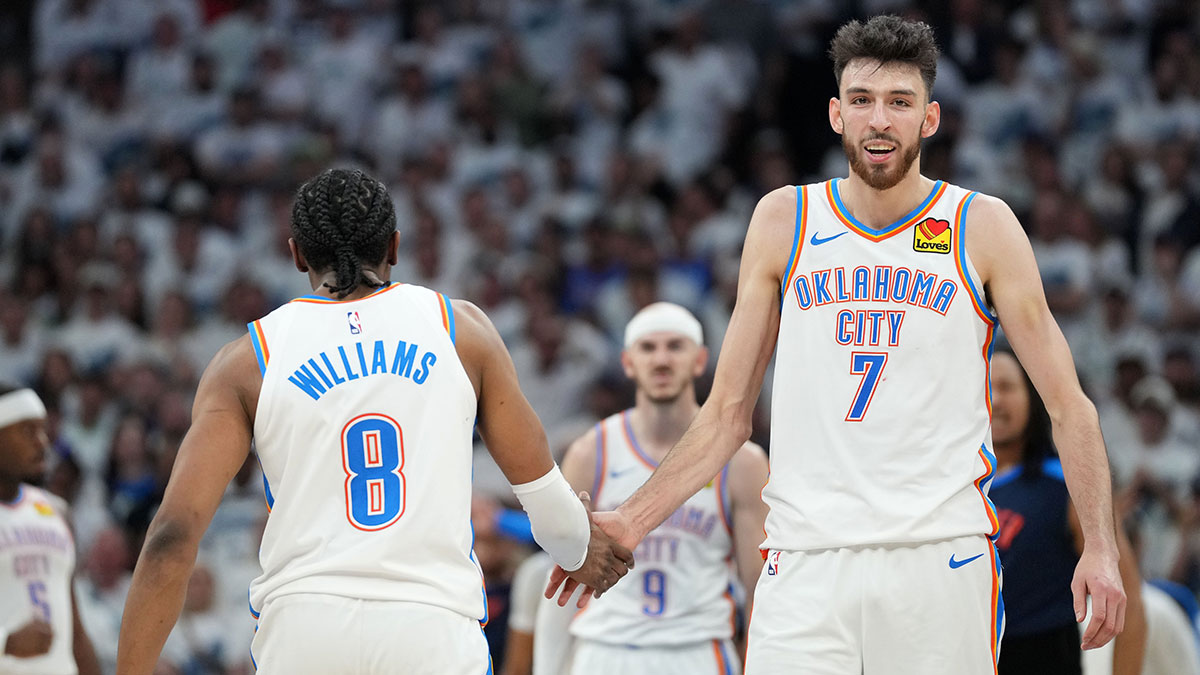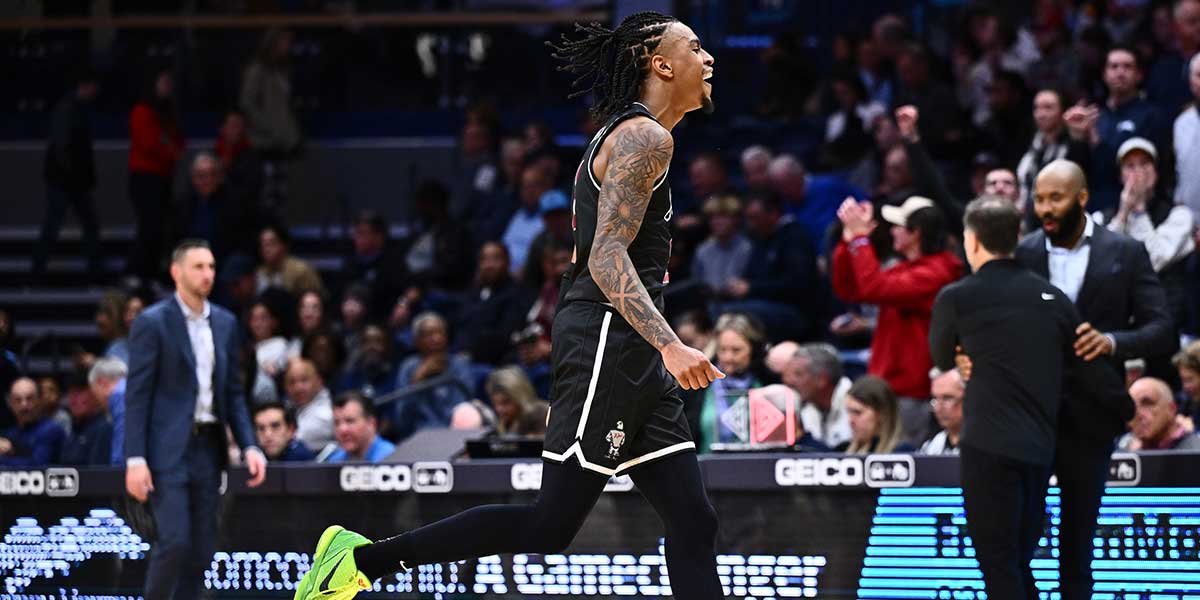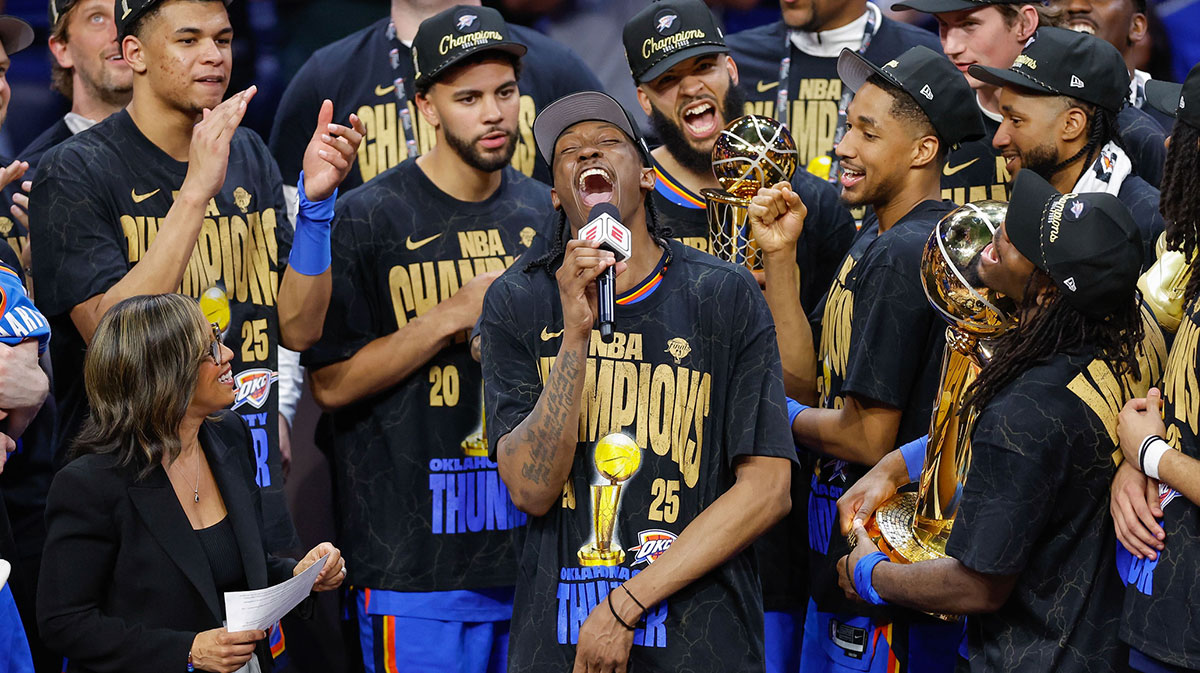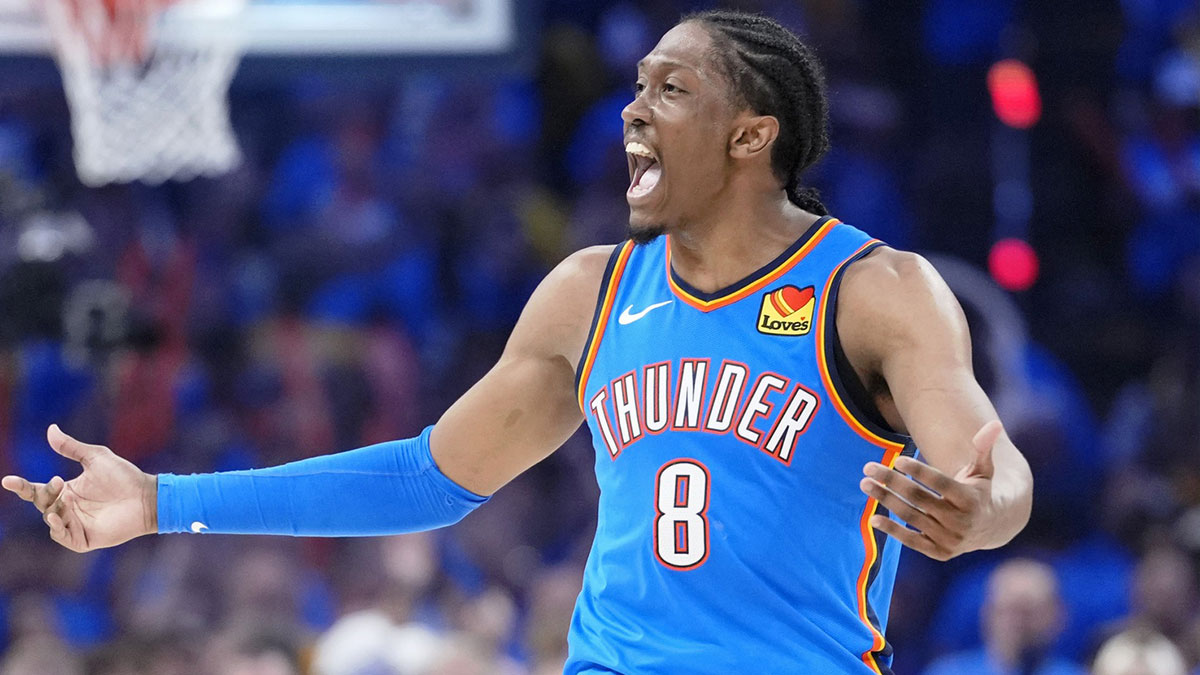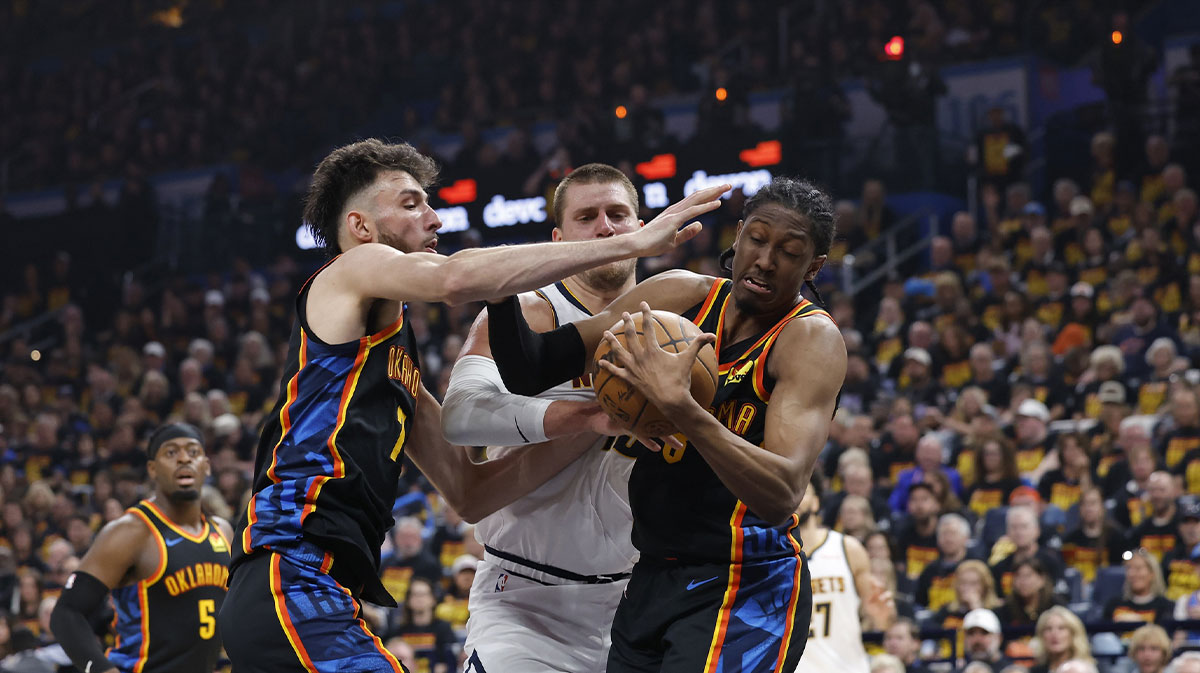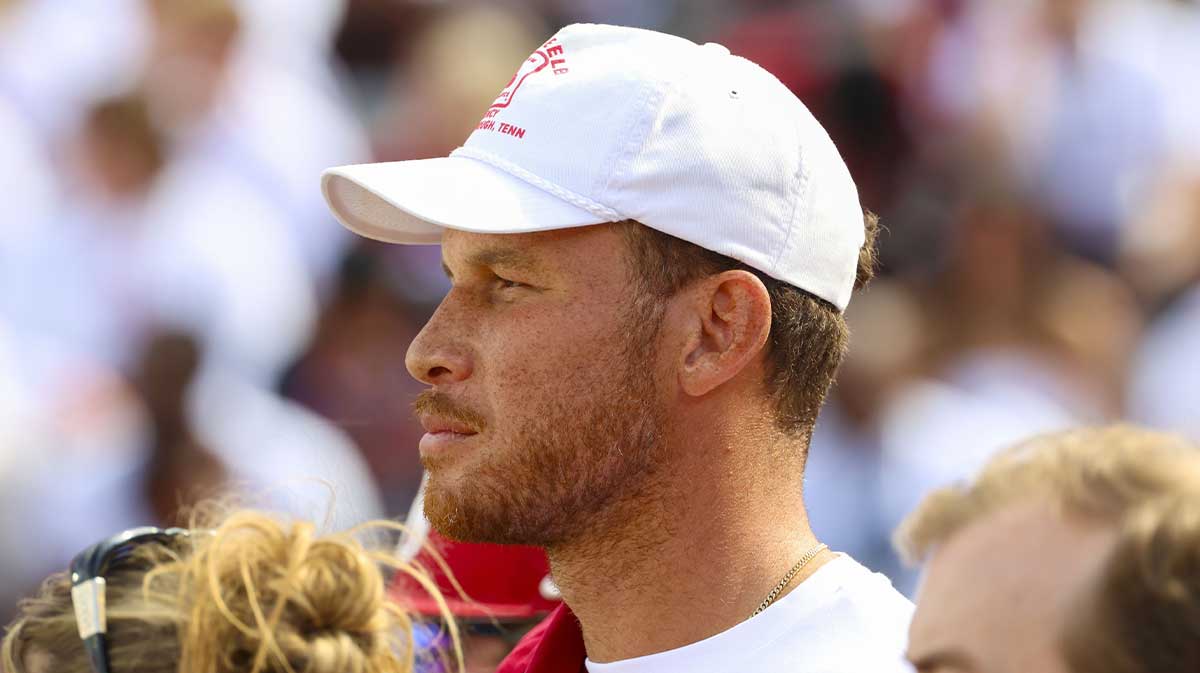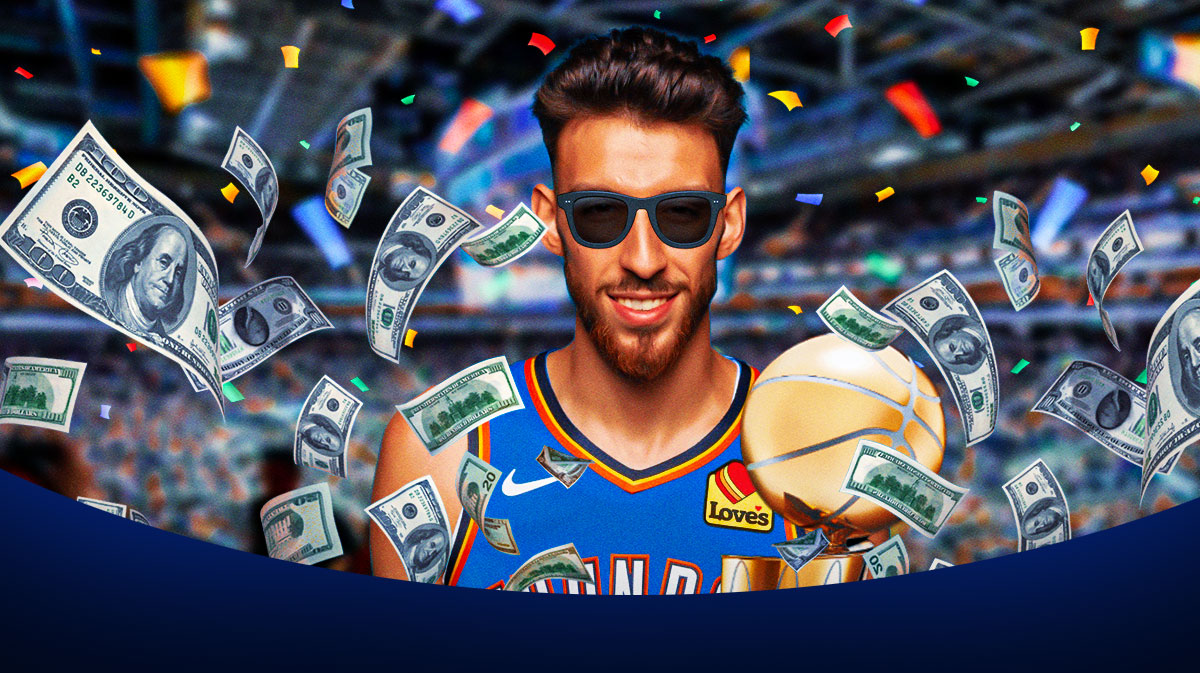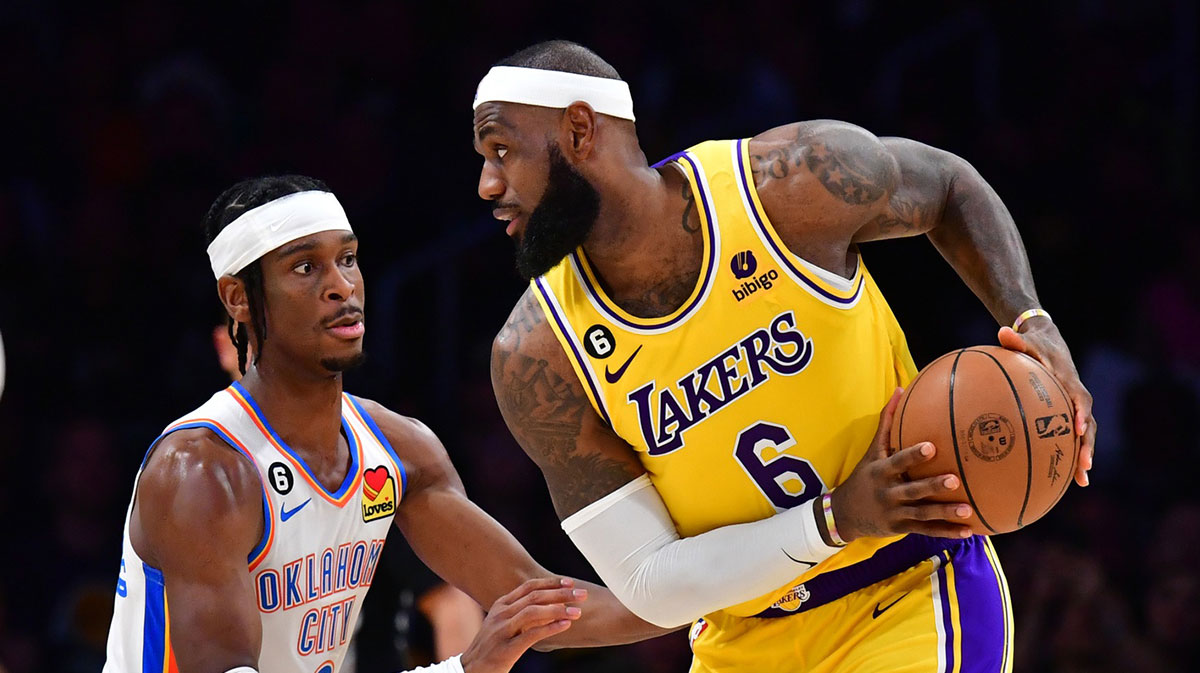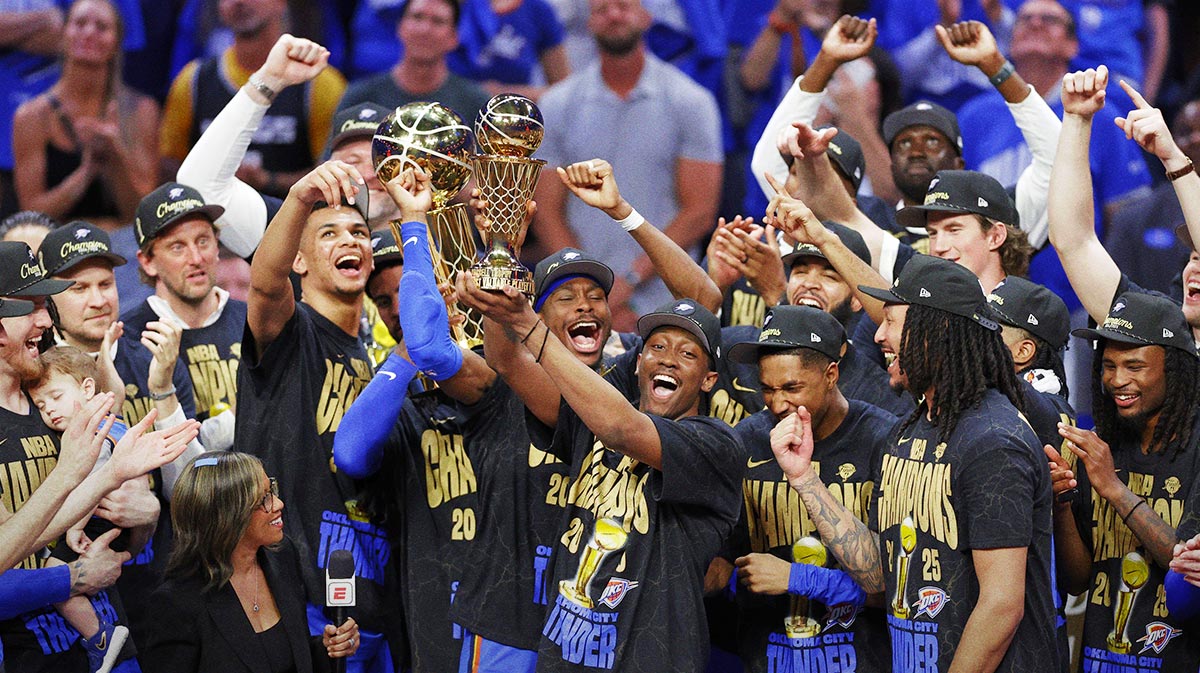When he immediately agreed to re-sign with the Oklahoma City Thunder on July 1st, Paul George faced a load of questions.
Why would you return to a situation that looked even bleaker than your Indiana days?
Why wouldn't you wait until LeBron James made his intentions clear before deciding?
Why not at least take a meeting with the Lakers — or any other team — to perform all possible due diligence as a free agent?
As George stood with teammate and friend Russell Westbrook at their summer hype party, cigars resting in their mouths, him being the first domino to fall didn't make any sense. The notion that he'd be thrilled to return to Oklahoma City, where the offensive flow remained ugly during the first-round loss to Utah, seemed crazy.
Almost six months later, everything has pointed toward the absolute best-case scenario Sam Presti and the Thunder envisioned when George re-committed. It started with the team trading what's left of Carmelo Anthony, gaining backup point guard Dennis Schroder in the deal. It continued with the Thunder (somehow) rekindling the defensive reputation it was known for, despite the lengthy absence of Andre Roberson, their ace wing defender that specializes in his own Tony Allen role.
Through 30 games, the early success of the 20-10 Thunder — currently ahead of the Warriors in the West standings — can primarily be attributed to George. He's not only been Oklahoma City's best player on both sides of the court. He's also enjoying the best season of his nine-year career, and he has looked healthier and springier this time around.
After having arthroscopic knee surgery in the summer, George wasn't able to get on the court for the early portion of the offseason. It probably explained his inconsistent start to the season, efficiency-wise, and why he appeared a step slower defensively out of the gate.
But outside of the four-game skid OKC experienced to begin the year, they've won 20 out of 26 games, with five of the six losses being on the road. At home, they are mostly dominant, going 12-3 overall with a plus-9.2 net rating — behind only the Nuggets and Bucks in terms of home-court control.
George is currently averaging a career-high in points (25.5), rebounds (7.9), and assists (4.4) without having missed a game. He's taking even more three-pointers per game (8.7) while connecting on a similar percentage as last season, 38.2 percent. Although it's only a sample of 30 games, he would be one of seven different players in NBA history to score at least 25 points per game while shooting 50 percent from two, 38 percent from three, and 83 percent at the foul line. Stephen Curry is trying for his third, Kevin Durant has done it five times, Larry Bird met it four times, and Michael Jordan, Kyrie Irving, and Kiki Vandeweghe are all tied with one.
The hot and cold trend with his outside shooting is still there. He'll have games where seemingly nothing is falling, even on the wide-open attempts. But his confidence and shot creativity have reached new levels compared to the East-leading years in Indiana when he was only shooting five or six triples a night. Out of all the superstar wings in today's game (George, Leonard, Durant, Butler, etc.), the two you most fear giving any airspace beyond the arc are Durant and George, and George is almost doubling Durant's attempt rate from distance this year.
Recently, he's been on a complete rampage. In his last eight games, George has averaged 31.8 points on 47.1 percent three-point shooting. For perspective, Stephen Curry has the same three-point efficiency in his last eight games as well. Even though OKC went 5-3 during those eight games, the one constant positive was George.
This isn't just a huge offensive explosion, either. He has returned to his defensive roots that started under Frank Vogel, when George became a hellion on the perimeter. With him offering some of the most terrorizing on-ball defense that begins on opposing wings and is able to trickle down to point guards when necessary, it's difficult for anyone to penetrate against OKC. Once Roberson's injury setback occurred, George was required to shoulder the defensive load against most first-option scorers.
According to NBA.com's tracking data, 66 players have defended at least 5.5 shots per game outside of 15 feet. Out of those 66, George has held opponents to the No. 1 efficiency drop-off compared to what's expected. When he's the closest defender, George's opponents have shot 31.1 percent from outside 15 feet, third to only Paul Millsap and Jrue Holiday. Of course, the NBA's defensive tracking data has proved to be a little inconsistent, but George being in the same group with those two certainly matches the eye test after 30 games.
So far, it hasn't caused him to run low on energy or decreased his impact on either side. In the recent ESPN Real Plus-Minus update, George's efforts in the last month have propelled him to very elite status. He's just an inch behind James Harden (7.23) for first overall in RPM, but he is the only player in the league that rests in the top 10 offensively and defensively.

What's staggering is that he has contributed more RPM Wins to Oklahoma City than LeBron James has for the Lakers, with James playing every game thus far and lifting L.A. to a somewhat overachieving 19-13 record. In context, that's some hellacious impact for George.
This encapsulates how much of a handful he can be:
George knows a handoff is coming, and that it might turn into a pick-and-roll. He bursts into the screen, believing Kris Dunn will go around Robin Lopez. When Dunn spins back to the original side, George stays glued to him and telegraphs the next spin perfectly. The moment Dunn exposes the ball, George strips it, takes off in transition, and pulls up from the wing. He causes a turnover and gains three points within seven seconds.
A number of factors could be playing into George's blazing hot start. Among them could be Roberson's absence has removed a spacing liability in the starting five, helping OKC's all-star duo breathe a little bit offensively. It could also point to how much of an albatross Anthony was for them, particularly defensively, with George and others not having to play janitor duty for poor and/or slow rotations this year. Another possibility is one we always see: The second year of a high-usage, star player getting acclimated with a new offensive scheme and their teammates' tendencies is always better than year one.
It might sound cliché, but these experiments take time. Often, it's more time than any fans or viewers want to give.
George has found his niche playing off Westbrook when the two are together. However, what isn't being discussed enough is how much of the offense he's taking into his own hands, not relying on OKC's primary initiator to get the juices flowing. With Westbrook making an effort this season to dial back his usage and adapt his game like nobody thought he could, George is reaping the offensive benefits.
The ball is in George's hands more, whether it's running pick-and-roll with Steven Adams, slipping screens for Westbrook and flaring out for three, isolating with the second unit, or creating open shots for his teammates through some improved playmaking skills.
This year, only 29.6 percent of George's two-point field goals have been assisted — the lowest of his career and markedly below the 36.8 percent over the previous two seasons. On the surface, that may sound like a negative thing.
“Oh no, he's falling into the isolation trap because this OKC offense is stale!”
Not exactly. In this case, what we're seeing is George feeling the most comfortable he's ever been in the pick-and-roll, dissecting a defense and finishing inside the paint at a much more successful rate than before. He's reading defenses quicker, recognizing where the gaps are, and exploiting any pick-and-roll coverage:
Outside of (maybe) Durant because of the insanely long strides KD uses, George has the most lethal shiftiness of any high-profile wing. There's just not many guys with his size that can snake horizontally through the lane quite like George. He knows when to switch angles, and then has the perfect timing of when to use his strides to either draw contact on the last defender or create an easier window to score.
George torched another opponent for 40-plus points on Wednesday in Sacramento. There was nothing any Kings defender could throw at him, especially in the fourth quarter. Kings' coach Dave Joerger tried to give Justin Jackson the honor for a while, but George tortured Jackson in about five different ways. At times, poor Yogi Ferrell found himself picking up George (in semi-transition or off switches). That's when George immediately called for the ball and toyed with the mouse in the house.
The three-point threat has turned into such a powerful tool for him, notably because it opens up the rest of his game. It gives any player a wider arsenal to work with, but also increases the number of worries for pick-and-roll defenders. Not knowing if a ball-handler is hunting a pull-up or waiting for the screen to free him open forces defenders to be on high alert.
Here, about a second after Nerlens Noel slips the screen and makes his way to the rim, George delivers a crossover and drives hard down the lane. Keep an eye on how he hesitates after the crossover, waiting for Willie Cauley-Stein to get deeper into the paint. Then, he turns on the jets:
George is 78-of-114 (68.4 percent) at the rim this season, finishing the highest percentage of these contested layups of his career.
Where he's still struggling is in the daunted floater range (4-10 feet), a place where he's just 13-of-42 (31.0 percent) this year after shooting 42-of-137 (30.7 percent) last year. The non-restricted area paint is always a hard place to finish while on the move, but those are still way uglier than his percentages during the final two seasons in Indiana. Something about OKC has taken away his touch from that area.
The best version of George is when he realizes the defense is playing him for his triple, so he puts his head down and still finishes at the rim while absorbing contact:
Nevertheless, the most overlooked component of George's season right now is how much he's helping the offense with his passing. This is mainly out of pick-and-roll, which is a luxury because your 6-foot-9 wing can collapse the defense and create open shots so that Westbrook doesn't have to every single possession.
George has generated 312 points off assists in 30 games (10.4 per game). That doesn't appear to be a ton, but it is when you consider he created 626 points off assists in 79 games last season (7.9 per game). Yet, his turnover percentage has actually dropped from 12.5 percent to 11.5 percent — an encouraging sign that he can handle more playmaking duties without wasting possessions.
How he's picking apart defenses now, versus the last few seasons, is a real art. Here, notice how when the first screen comes, he recognizes how Nemanja Bjelica is going to leave the left corner to help. Then, when the play resets, he executes the dime to Patrick Patterson right when Bjelica takes two steps inside:
The timing couldn't be better. The cross-court pass was as accurate as Westbrook's.
He did the same exact thing earlier in the game, with Patterson as the screener and a lights-out shooter, Alex Abrines, in the left corner. Justin Jackson takes two steps down to cover Noel, and it's a quick dart to the corner shooter:
Even without optimal spacing on the court for OKC, it's George's penetration that forces the defense to make tough decisions. Once big men come up to help, wing defenders, such as Buddy Hield here, can either rotate to the dunker spot or stay home on shooters. Right when they decide, George has been willing to dish to the open man:
Those last two assists were from the second quarter, when George usually runs the show without Westbrook for a few minutes. The underlying success story of their season has centered on just that: How much production can Billy Donovan get out of George plus the bench, with no Westbrook. If they continued to get destroyed like in previous years, they wouldn't be 20-10 right now.
The results, so far, are more than promising. They're actually quite stunning.
In the 402 minutes George has played without Westbrook, OKC has posted a 102.6 offensive rating and 93.7 defensive rating — outscoring teams by 8.9 points per 100 possessions. Now, obviously the offensive production hasn't been amazing. A rating of 102.6 would be one of the league's worst offenses. However, their defensive intensity and execution would have them looking like Bill Russell's Celtics. Think about that.
Last season featured 563 minutes with George on the floor and Westbrook off. The Thunder had a 91.1 offensive rating and 102.6 defensive rating, being outscored by 11.5 points per 100 possessions.
So in comparison, the offense with George has taken a huge step forward. It allows Westbrook to get more rest than ever before, while George still takes everyone to school.
This is not to say Westbrook is a problem, because he's certainly not. Other than his poor shooting, Westbrook has helped George thrive to a high degree when they're together. George shoots 41 percent from three when his running mate is on the court as opposed to 34.7 percent when Westbrook sits. They're awesome on their own, but just a few notches above that together.
George's early MVP case ascends when you observe the fourth-quarter carnage he has inflicted on everyone. He scores about the same amount of points in the fourth as he does in the first, but in fewer minutes:

His 68.7 true shooting percentage in fourth quarters is higher than any star player with at least 25 percent usage. Higher than Curry, Harden, Durant, LeBron, Butler, and Antetokoumpo.
Trying to navigate through all of the MVP candidates before Christmas is nearly impossible. The list is longer than seemingly any other season in history.
There is a good chance Curry will deserve the most recognition once his games played don't appear to be a huge outlier. LeBron James is writing one of the most irresistible narratives in sports; taking over a non-playoff team and elevating them to a possible home-court seed with his gaudy numbers.
Joel Embiid is the strongest and most efficient post scorer in the league while being the main reason Philadelphia can excel defensively. Anthony Davis is defending everything in sight and has the most responsibility across the league, but doesn't (and won't) have the necessary wins.
James Harden is arguably better offensively right now than he was a year ago, when he took home the award in a landslide. Plus, Houston is back in the playoff mix. Kawhi Leonard hasn't missed a beat since 2017 and Toronto is leading the East. Nikola Jokic is doing everything in his power, on both ends, to keep Denver in first place out West.
Giannis Antetokoumpo is likely the frontrunner at the Christmas mark. He has the Bucks outperforming expectations while shooting 80 percent at the rim and averaging 27-13-6.
Eight (!) candidates were just listed. Then, there's Paul George. Figuring out where George stacks up in this loaded field is a nightmare. It's simply too early to be having migraines over the MVP race, but George's case is about to give us all trouble.
If the season ended today, he belongs. As much as anyone, and probably enough to squeeze in the top four. Only Antetokounmpo and maybe Jokic or Embiid can match George's current résumé that features offensive explosions, tangible defensive impact, season-long health, and most importantly … wins.

